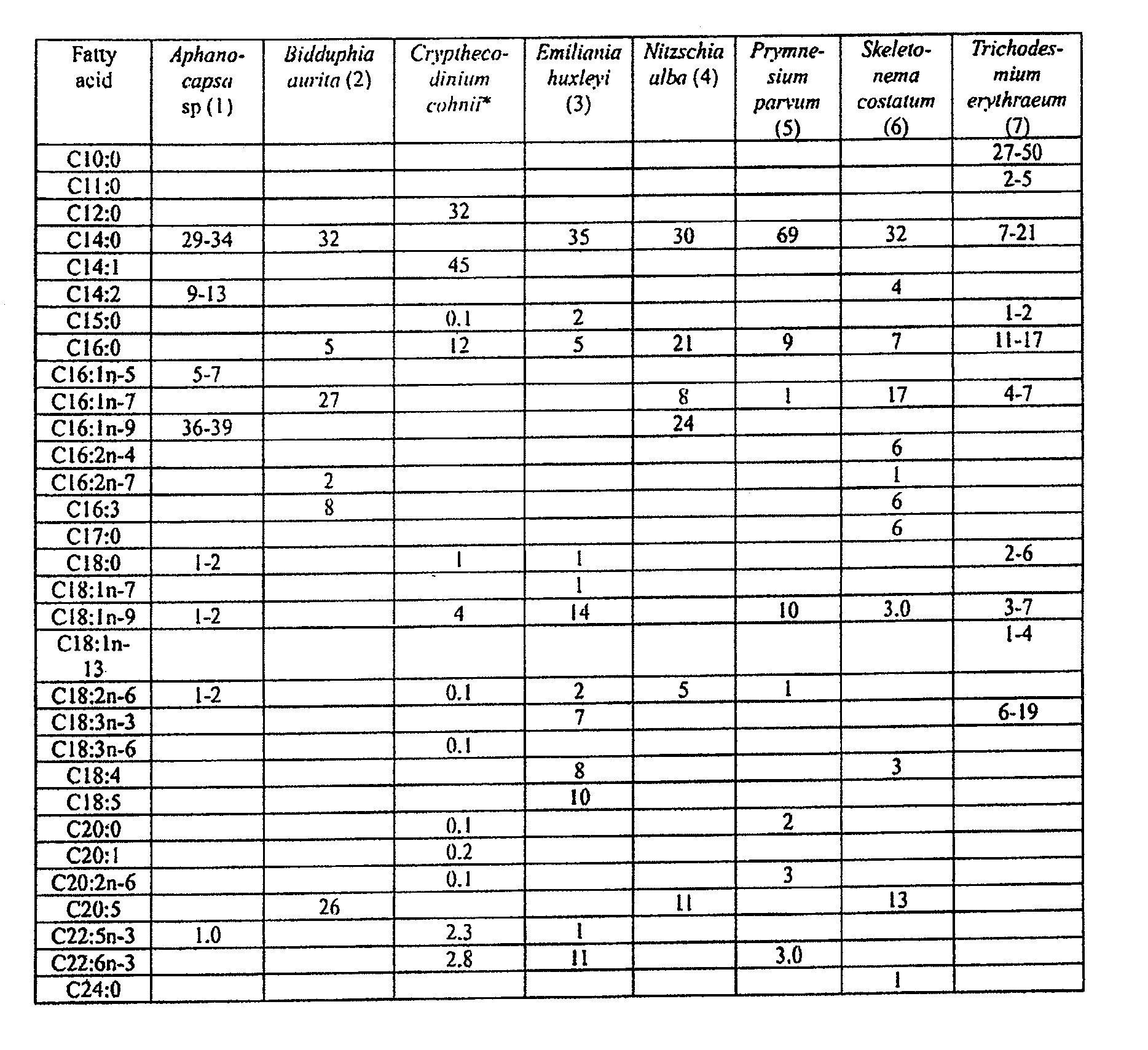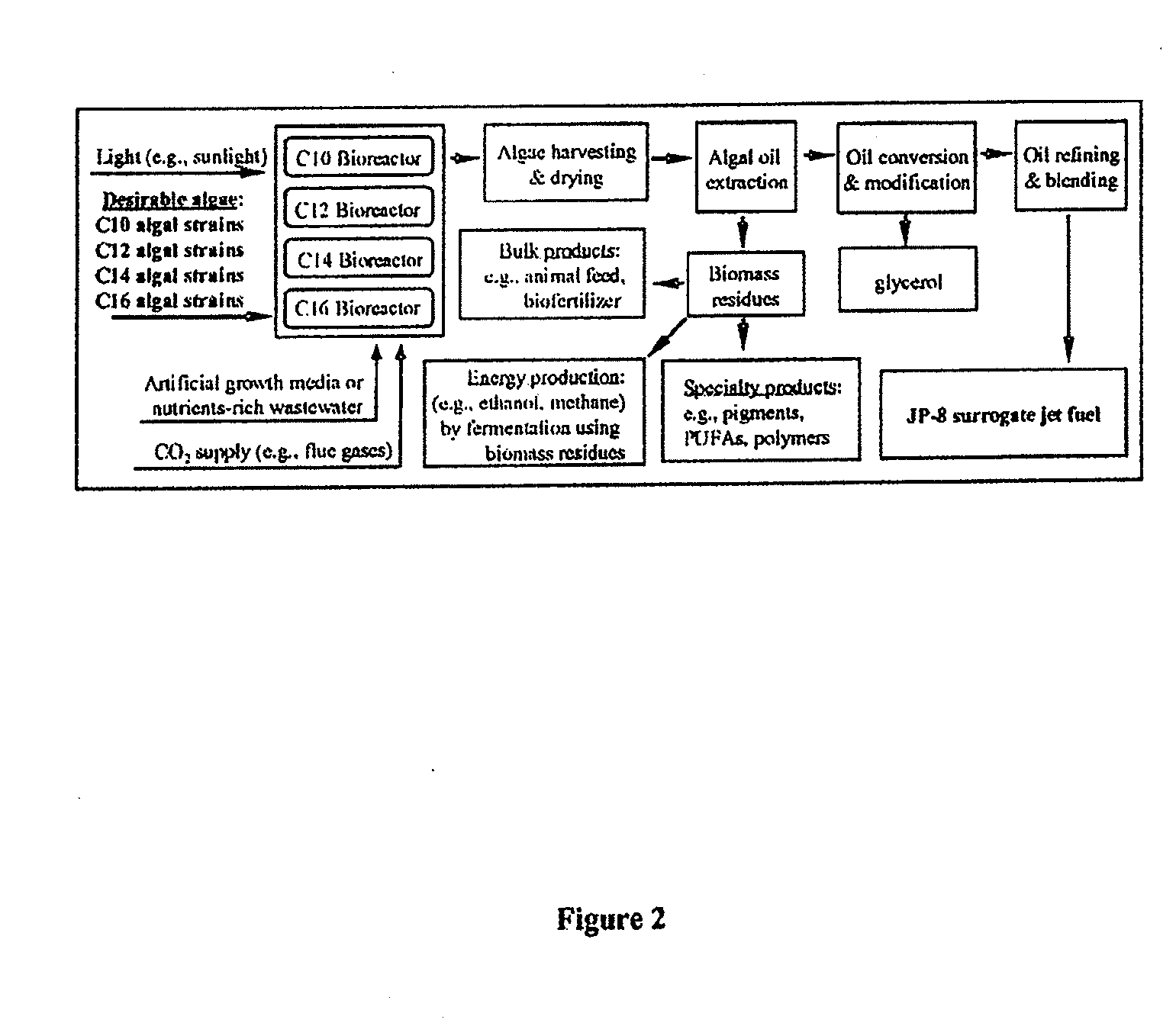Co-culturing algal strains to produce fatty acids or hydrocarbons
a technology of fatty acids or hydrocarbons and co-culturing algal strains, which is applied in the direction of fermentation, unicellular algae, liquid carbonaceous fuels, etc., can solve the problems of increasing competition and price volatility for limited global supplies, the third of the growing us trade deficit and an increasing burden on the us economy, and the biodiesel produced from current available oil crop-based feedstocks and commercial processes is not suitable as a jp-8 surrogate fuel for military
- Summary
- Abstract
- Description
- Claims
- Application Information
AI Technical Summary
Benefits of technology
Problems solved by technology
Method used
Image
Examples
example 1
[0086]A general process diagram of the proposed algae-based jet fuel production technology is shown in FIG. 2.
[0087]In various non-limiting examples, the following processes can be carried out in conjunction with algae-based medium chain length fatty acid production:
Production of algal feedstock using a number of selected algal species grown in one or more photobioreactors of same or different designs. Each selected algal species will produce large quantities of oil enriched with one or more medium-chain length fatty acids / esters.
Oil-rich cells are harvested and dried in a form of algal flour.
Algal flour is subjected to solvent extraction using a chemical extraction method. A supercritical liquid extraction method can also be employed as an alternative.
Resulting algal oil is subjected to a deoxygenating / hydroxylation process to convert algal oil to hydrocarbons.
A separation / refining technology separates and concentrates desirable hydrocarbon fractions from the deoxygenation process....
example 2
[0088]We have performed screening for medium-chain oil-producers from numerous algal species / strains isolated by and maintained in our lab. One of the algal strains tested in our lab is a marine alga Pinguiococcus pyrenoidosus (Pinguiophyceae) CCMP 2078 (Provasoli-Guillard National Center for the Culture of Marine Phytoplankton, Bigelow Laboratory for Ocean Sciences, P.O. Box 475, 180 McKown Point Road, West Boothloay Harbor, Me. 04575, U.S.A.), which has the ability to produce lipids enriched with C14 fatty acid, which can make up 30 to 50% of total fatty acids produced in the cell. The fatty acid composition of Pinguiococcus pyrenoidosus is disclosed in Table 1.
TABLE 1Fatty acid composition of Pinguiococcus pyrenoidosus.The alga was grown in h / 2 growth medium and exposed to alight intensity of 200 μmol m−2 s−1 and at25° C.Fatty acids% of total fatty acids14:049.4216:030.1516:11.0218:02.1318:13.818:21.62
[0089]FIG. 1 lists eight (8) medium-chain oil-producing algal species as exampl...
PUM
| Property | Measurement | Unit |
|---|---|---|
| freezing points | aaaaa | aaaaa |
| area | aaaaa | aaaaa |
| temperatures | aaaaa | aaaaa |
Abstract
Description
Claims
Application Information
 Login to View More
Login to View More - R&D
- Intellectual Property
- Life Sciences
- Materials
- Tech Scout
- Unparalleled Data Quality
- Higher Quality Content
- 60% Fewer Hallucinations
Browse by: Latest US Patents, China's latest patents, Technical Efficacy Thesaurus, Application Domain, Technology Topic, Popular Technical Reports.
© 2025 PatSnap. All rights reserved.Legal|Privacy policy|Modern Slavery Act Transparency Statement|Sitemap|About US| Contact US: help@patsnap.com



